I became a bee tycoon in this survival city builder, then lost my fortune to a perfect heist
Farthest Frontier, from the makers of Grim Dawn, is a medieval city builder with a lot of surprises.
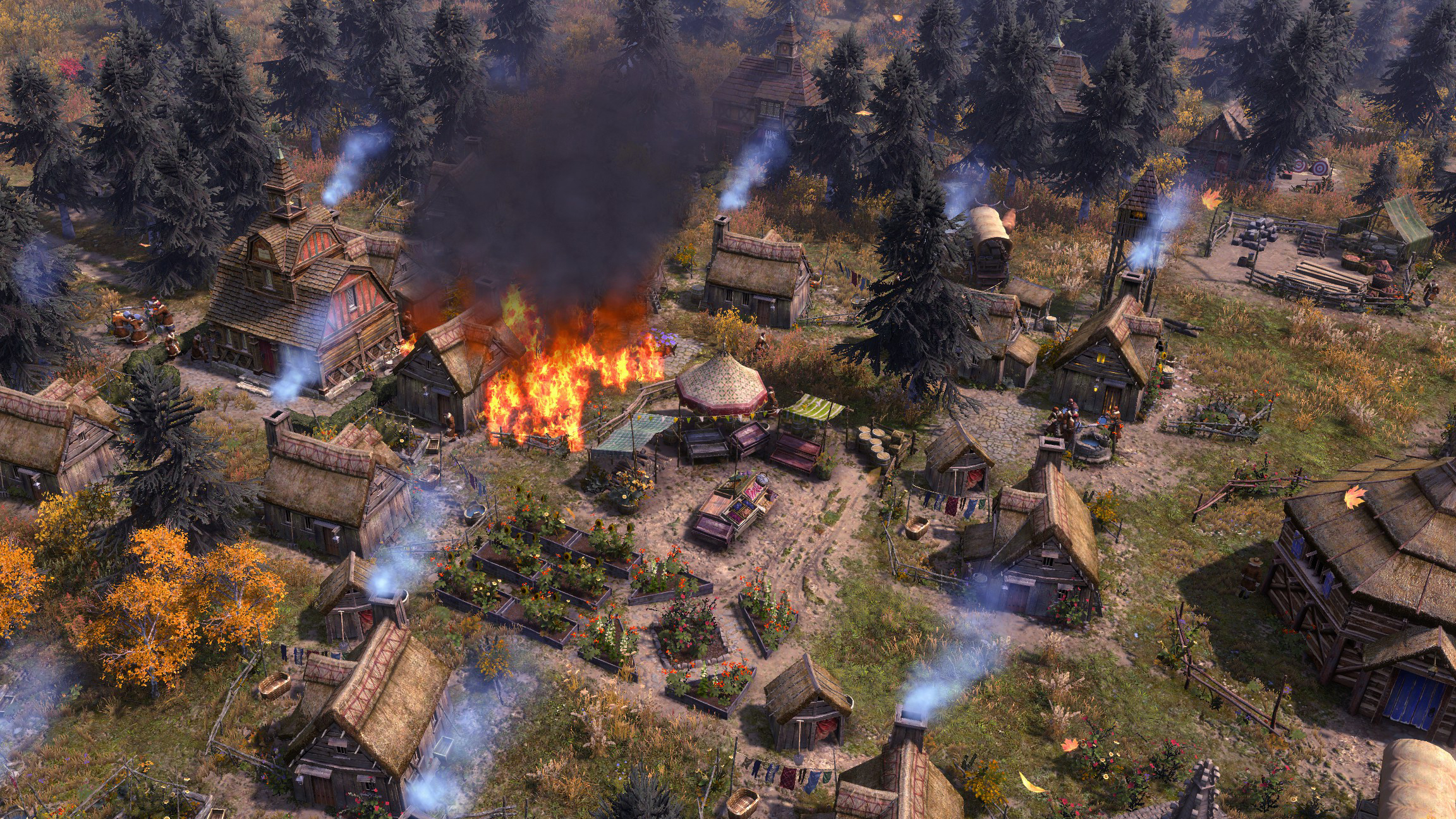
I've played a few medieval survival city builders before, and the one I'm playing now is from the makers of apocalyptic fantasy action-RPG Grim Dawn. So I feel like I'm not being pessimistic, only practical, when one of the first things I tell my citizens to build in my little town is a graveyard.
It turns out to be the right move. Farthest Frontier doesn't take its time putting my little peasants in mortal danger: They've only just started hammering together their first building, the town hall, when one of them is attacked by a wolf. I'm pleased to see they're a tough group, quickly swarming the predator and killing it, but that's just the beginning of the threats. In the opening months of the game a heat wave rolls in, followed by a harsh winter that threatens to freeze them if I don't chop enough firewood. One of the first few crude shelters I build catches fire, and they have to quickly scoop water from the new well, built only moments ago, to douse it.
There's another wolf attack, followed by a bear rampaging through the town and causing the villagers to hide in their homes until the one guy who owns an axe deals with it. And then the diseases begin rolling in. Dysentery. Scurvy. Typhoid. Cholera. Worms. Worms. Most survive after I quickly build a healing hut, but a couple of them perish. Also, and it brings me no pleasure to say this, but when I built a fence around my carrot field to keep deer from eating my vegetables, I forgot to install a gate and one of my citizens who was weeding the ground got trapped inside and, ironically, starved to death.
Starving to death on a farm. It's not a good omen for the town of Grimville.
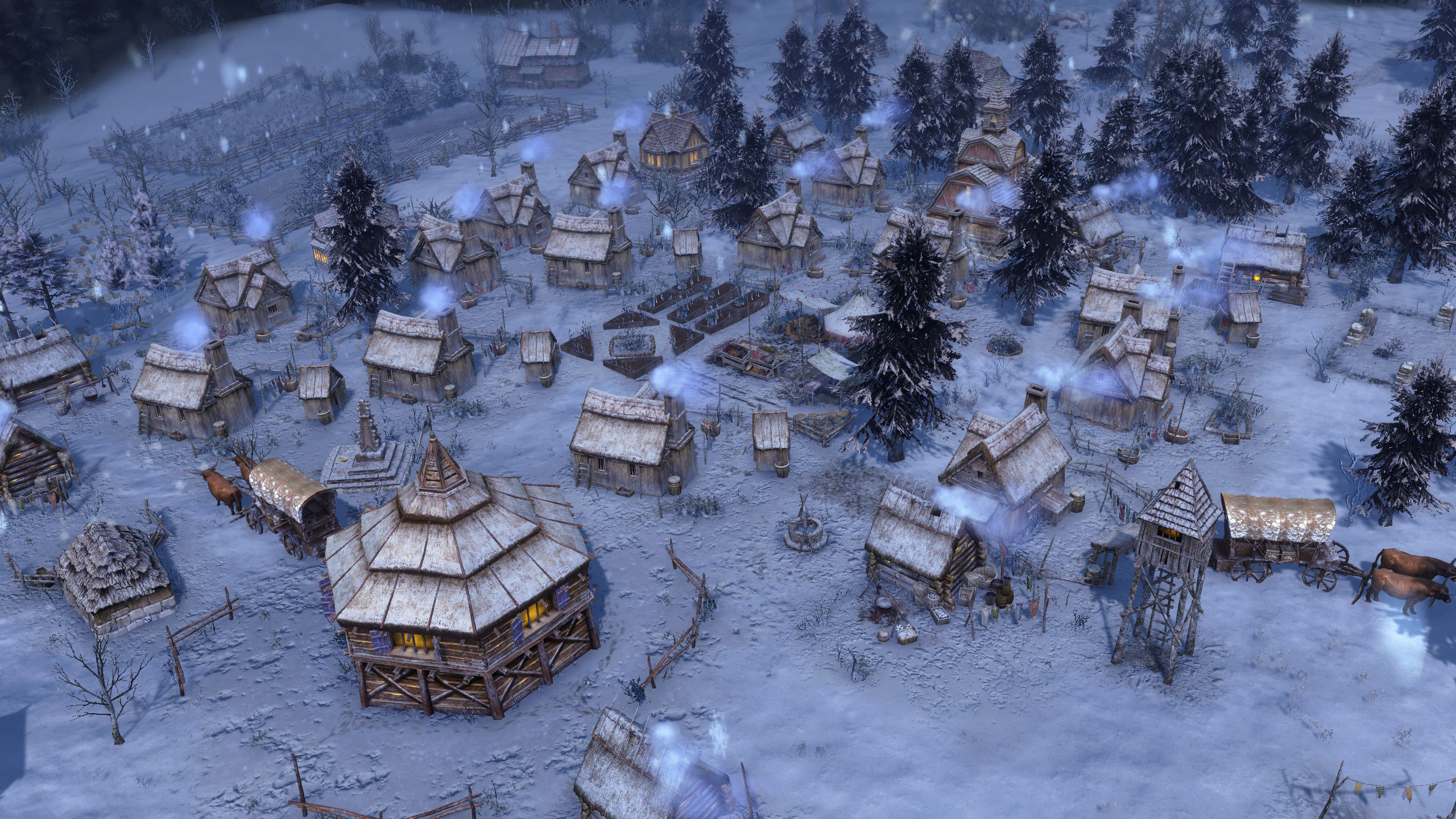
Grim pawns
Despite these setbacks, my little village slowly grows. I start with a dozen citizens, but soon I've got enough shelters to support more and the population rises, and with enough food and some decorations nearby their shacks begin to upgrade into proper homes. I build a market that lets them buy different foods and the goods my buildings produce, like pottery and clothing. After about 10 years in the harsh climate, I open a cobbler shop and my little people finally have shoes. Yep, they've been hoofing it through the snow without proper footwear for a decade. Like I said, they're a hardy bunch.
I've got hunting camps deep in the woods, forager shacks to collect eggs, herbs, and berries, and a fishing hut on the edge of a small lake. The problem with food is there's often barely enough—deer and boars will eventually move to other areas of the woods, so hunting camps need to be relocated regularly. Likewise, berry bushes and fishin' holes become depleted from time to time. Moving camps isn't a big deal, but it does take laborers time to redeploy and any time spent not accumulating food means less food to eat.
My villagers quickly fill their houses with poo, so I assign a villager to run around with a wagon collecting filth all day.
There's another problem: too much food. If my villagers collect a surplus of meat, fruit, and veg, the stockpile will eventually spoil because there's no refrigeration. Along with wildlife eating the vegetables I grow, rats get into grain supplies, and heatwaves, frost, and weeds can wither crops. There are counters to these problems: root cellars for storage, a preserves shop that can convert fruit into longer-lasting jam, and a rat catcher to kill pests, but each of those solutions require materials and workers, and if too many people have specific jobs there aren't enough general laborers to build structures and transport resources.
Keep up to date with the most important stories and the best deals, as picked by the PC Gamer team.
It's a pretty delicate balancing act (firing the schoolteacher so she can go chop wood for a year feels especially harsh) and there's a lot of small details to consider each time I build something new. Even poop is simulated. My villagers quickly fill their houses with poo and spoiled food, so I assign a villager to run around with a wagon collecting filth all day. Lucky guy!
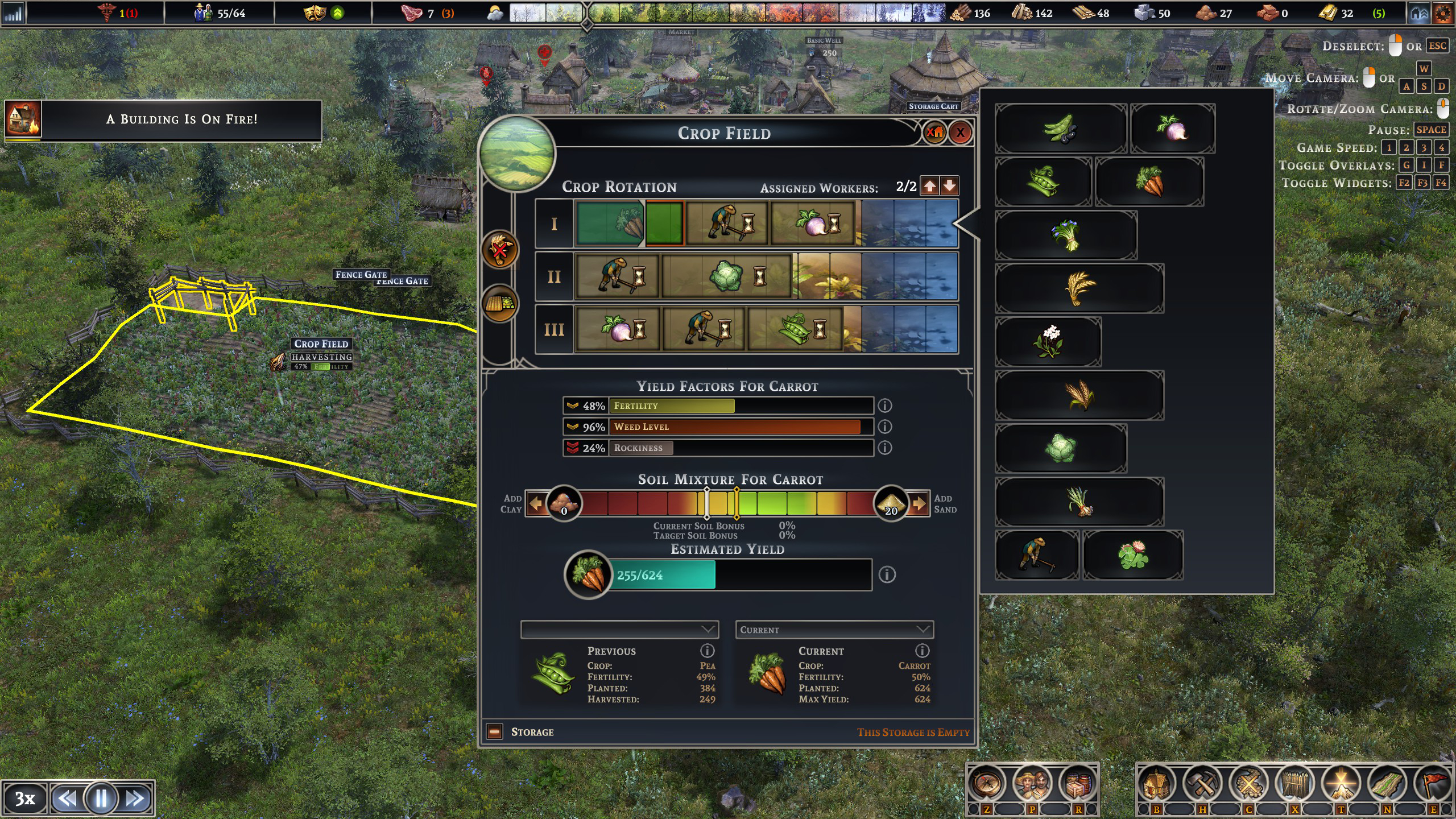
The food struggle in Farthest Frontier is real, and it's one of the most challenging and interesting systems in the game. Crop rotation is important, and you can plan out three entire years of crops at a time on a single field. Each plant has different stats in terms of durability, duration of growth, yield, and other attributes that need to be studied, and like your citizens they are also vulnerable to diseases. You also need to drop in segments along the timeline for the farmers to tend the field instead of just planting and harvesting, or else you'll be overrun with weeds. You can even tweak the soil itself by adding clay or sand to increase the yield of each crop. And all that villager poop I've forced that one poor sucker to collect? It can eventually be put to use as compost to enrich the soil on your farms. Farming is tricky and I haven't quite mastered it even 15 years into the game, with most of my crops yielding less than half of what I'd hope.
Gold is an ongoing issue for me, too—some higher tier buildings require gold bars to be built, and I also need gold to pay citizens to be soldiers and watchtower guards. But while I can mine ore like iron and gold, I can't smelt it into bars until I reach a higher tier of progress. I won't reach it for a good long while because some of the upper tier requirements depend on citizens' needs being met, which is a tough metric in a game where I let my people go a decade without shoes. And as life gets better for my villagers, they raise their expectations. It's great when shelters upgrade into homesteads and houses, but then they begin wanting finer goods, more choices of food, and entertainment options like a theater and a pub. That means I need even more resources and money.
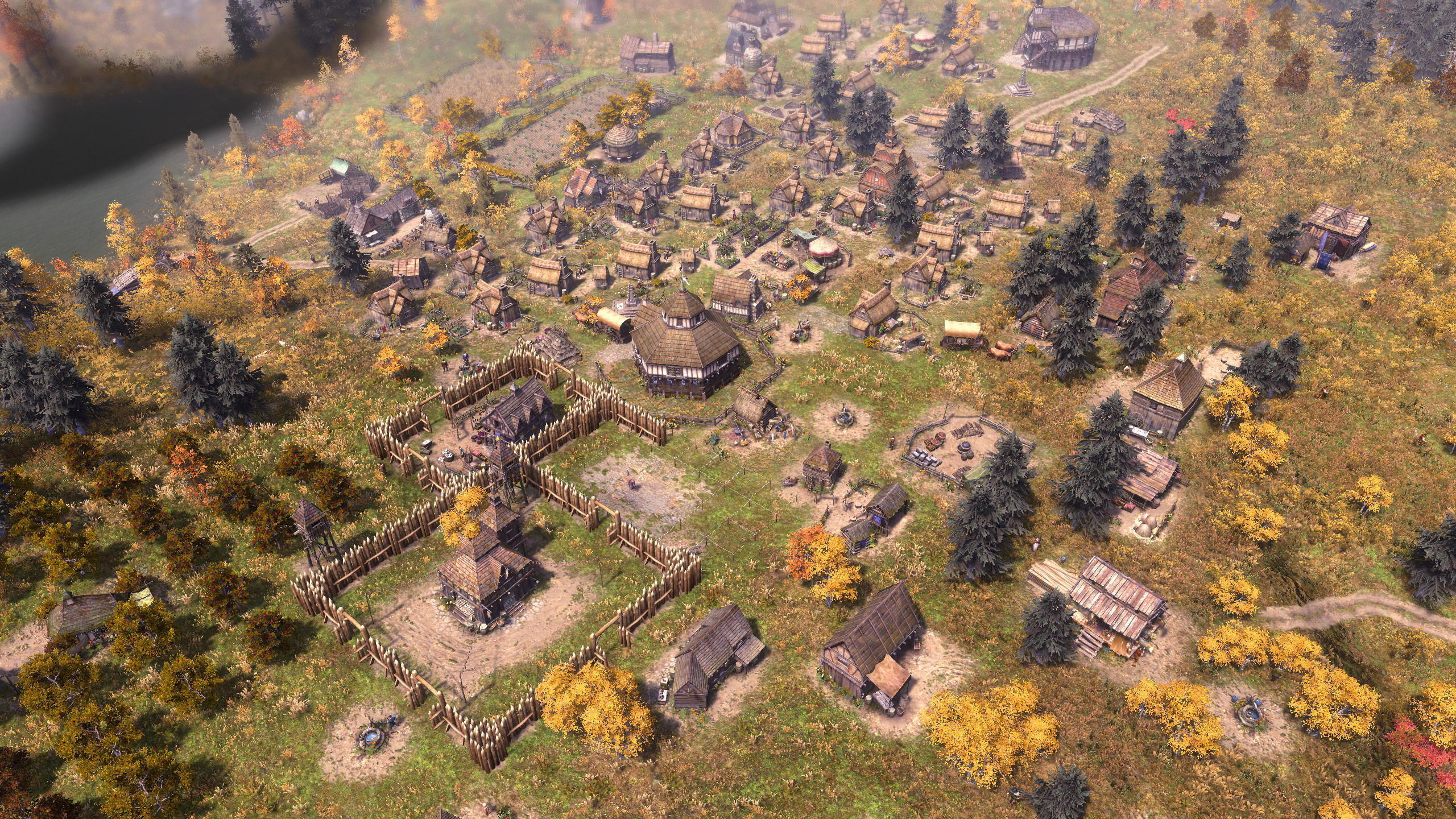
The bees knees
So, I do what I usually do in resource management games—I pick a specialty and go all-in. I decide my focus will be bees, partly because bees are cool but mainly because apiaries in Farthest Frontier are one of the few buildings that don't require a dedicated worker. I place them all around the map to automatically generate bee products, and my laborers will walk by and collect the wax and honey from time to time. The honey goes into storage and the wax goes to a candlemaking shop I've built. Just like I hoarded cherry-flavored cookies in Patron, I'm now hoarding candles. They're not for my townfolk to enjoy, they're for trade.
Which I quickly learn is also a problem. Only one or two traders bring their wagons to my town each year, and each is only interested in buying and selling a dozen or so types of goods. The first couple of years after I dedicate my town to becoming Bee City, my honey and candles just stack up in the warehouse. In the meantime, I'm still struggling to stock up enough food for the winter and I'm spending as much gold on soldiers and buildings as my citizens are generating at the market. It's a stalemate. I just can't seem to get ahead of the curve. To top things off, one of my villagers is stung by a bee and nearly dies due to an allergic reaction, something I didn't even know could happen. Sorry I filled our city with angry bees, swollen citizen! I swear, I did have a plan.

The raiders in Farthest Frontier seem to know exactly what they want and the best time to take it.
But the biggest threat to my village isn't me and my questionable decisions. It's raiders. These aren't some brainless bandits that spawn at a random edge of the map and attack a random building every now and then. The raiders in Farthest Frontier seem to know exactly what they want, and the best time to take it. What they want is all my good stuff, and the best time to take it is when I have the most of it.
I learn this after years of stockpiling candles and honey, when a trader finally arrives who is interested in buying both. I have my laborers hustle my supplies from storage to the trading post and sell as much as I can, racking up tons of gold bars. I take the newly earned gold and immediately spend it on meat from the same trader since I'm in short supply, then sell the trader the rest of my candles and honey to get that gold right back.
And right then is when the raiders come sprinting out of the woods, brandishing swords and clubs and heading straight for the trading post.
Um. Sheeit. I glance expectantly at my nearby soldier barracks, but no one comes running. Oh right, I had no gold to pay the soldiers so they all quit. Now I'm flush with gold but it's too late to do any good. My one short-staffed guard tower sends a few arrows flicking down at the attackers but it's no use. The raiders run straight to the trading post and bash the door down, vanish inside for a second, then come right back out and run off into the forest—with hundreds of gold ingots and a couple months worth of smoked meat. My precious candles and honey are all gone, sold for the money and food the raiders just scampered off with.

I'm furious and genuinely devastated, but I have to tip my cap. It was a surgical strike, and the event really made me feel like the raiders had been huddled at the treeline all winter, closely watching my town before swooping in to rob me blind at just the right moment. Well, lesson learned. I build walls around my warehouse and trading post, eventually build a proper vault for my gold, and move the guard tower into a better position. The next time the raiders strike they have to stop to destroy the gate first, which gives my guard tower enough time to fill them full of arrows.
It can be a tough life but the villagers of Bee City are pretty darn tough, too.
So, yeah. Farthest Frontiers is good stuff! There's a tough challenge in the juggling of priorities, resources, and labor, enough to keep me from playing at 3x speed most of the time because when I don't keep a close eye on the smaller details everything can go to hell. While a lot of systems feel pretty standard for a medieval city builder, games like Foundation, Patron, Ostriv, and others, they're still done well here. Other systems, like farming, feel more complex and interesting than I've seen in similar games.
And for all my setbacks—at one point my trading post completely burns down while I'm making a trade—the graveyard I built can fit 40 people but there are only currently seven headstones. It can be a tough life but the villagers of Bee City are pretty darn tough, too. (Except for the ones who stomped off angrily instead of waiting in the village to die.) There are some really nice UI options, like being able to toggle on and off tags for buildings, citizens, and resources to get a quick look at extra info. You can choose from several different maps with varied climates and resources, and there's an array of difficulty settings, including a pacifist mode, to find the level of challenge you're happy with.
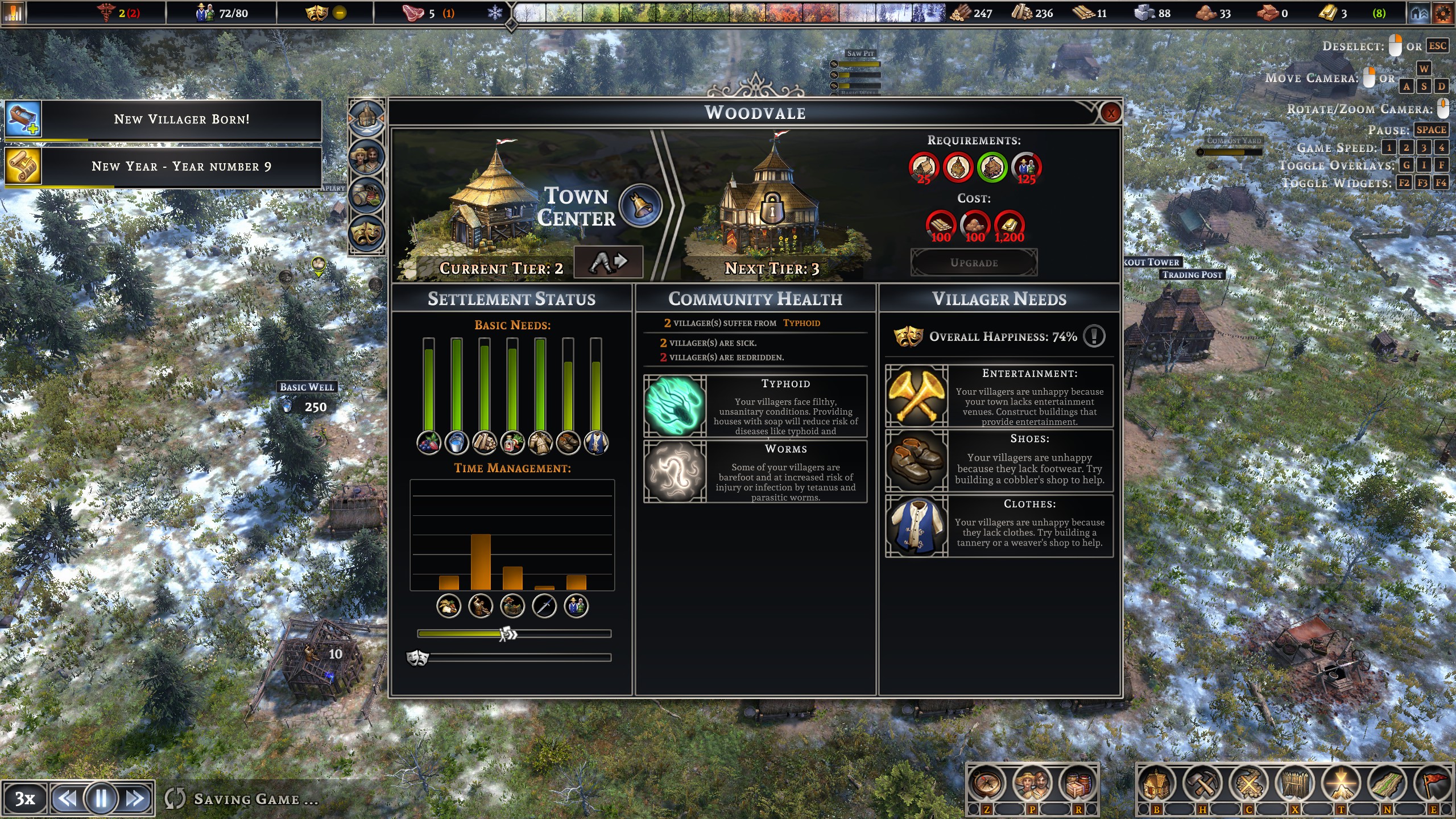
I've been playing a build of the game that's not even entering early access for another month, but I only ran into a couple minor technical issues that were resolved with a quick restart. Crate Entertainment's survival city builder is shaping up really nicely, and I'm looking forward to getting back to all the trees, bees, and disease. Farthest Frontier will crop up on Steam on August 9.

Chris started playing PC games in the 1980s, started writing about them in the early 2000s, and (finally) started getting paid to write about them in the late 2000s. Following a few years as a regular freelancer, PC Gamer hired him in 2014, probably so he'd stop emailing them asking for more work. Chris has a love-hate relationship with survival games and an unhealthy fascination with the inner lives of NPCs. He's also a fan of offbeat simulation games, mods, and ignoring storylines in RPGs so he can make up his own.

